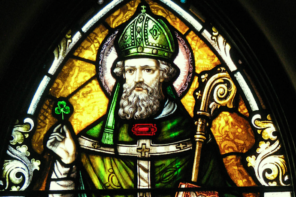Over the last several years, there has been growing attention to the role of cultural appropriation in Halloween traditions. And yet, costumes based on religious clothing—such as the sexy nun—seem to get a pass. Sexy nun and similar costumes represent women religious in ways that directly conflict with their identities and core values, so this Halloween it’s critical to remember that religious appropriation can also be problematic.
Some believe that nun costumes don’t qualify as appropriation since they borrow from the Catholic Church, one of the most powerful institutions in the world. But the real impact of nun costumes isn’t on the hierarchy, it’s on women religious, who already face mental and physical abuse within the Catholic Church. In order to assess the ethics of a sexy nun costume, however, we need to first understand how a habit functions in the religious life of these women.
Some forms of religious clothing, such as the Native American headdress, the tallit, and chapel veils, have specific meanings within the context of religious rituals and ceremonies. Other forms, like hijab, a turban, or a nun’s habit, are worn to help religious believers navigate even spaces and activities that are not explicitly religious. Sister Allison Regina Gliot, a member of the Daughters of Saint Paul order, describes the habit as “a reminder to ourselves and to others that there is more to life than this world and we are all called to an eternal destiny with God.”
Religious clothing also communicates identity and community belonging. This is especially true for consecrated individuals like women religious, who devote themselves to religious service, and wear specific clothing as part of their religious calling. Before the profession of religious vows, Sister Allison tells us, there’s a ceremony attended by the community where a new sister is blessed with special prayers and receives her habit for the first time. Sr. Orianne Pietra René, another sister of the Daughters of Saint Paul, explains that the habit “much like a wedding ring, is a treasured symbol of the bond between spouses, both for the couple and to others.”
Finally, the habit is closely connected to the values of religious orders—values like simplicity. As another sister from the Daughters of Saint Paul explains, “my habit is also a way of living a simple life, not having to decide what to wear or to be concerned with keeping up with the latest fashion.”
Habits are also purposefully modest, keeping parts of a woman’s identity private, and preventing her sexualization by others. “Bad habit,” “sinful sister,” and “twisted sister” nun costumes are sexy cosplay intended to make the wearer more attractive. But we were told by several sisters in the order of the Daughters of Saint Paul that, since one of the purposes of a habit is to prevent the sexualization of women religious, a sexy costume that integrates a habit is not only disrespectful, it negates a habit’s original purpose.
Many are aware that Halloween, a secular holiday with connections to All Saints Day, originally celebrated saints. But dressing up as your favorite saint for Halloween is strikingly different from dressing as a caricature of a nun in a violent, provocative, or mocking way. As Sister Allison explains, she and her fellow sisters “wear these distinctive outfits so that people can recognize us and feel safe in approaching us with their spiritual needs.”
And that means, she says, that nun costumes “can be confusing and weaken the impact that we want our habits to have in the world.” A sister from the Daughters of Saint Paul adds, “the more people let this image of religious sisters affect the way they think about real religious sisters, the less we are able to act as sisters to everyone.” For these sisters, appropriating nun costumes can limit their ability to carry out their mission in the world.
Some believe nun costumes are justified as a critique of Catholic systems of oppression, such as patriarchy, homophobia and transphobia, and sexual abuse. But it’s significant that sexy nun costumes are far more popular than sexy monks or priests; rather than combat these systems of oppression, they leverage stereotypes of women’s bodies as sexually dangerous and thus contribute to gendered sexism.
“Sexy” or “scary” nun costumes are neither acts of solidarity with women religious nor ethical forms of religious criticism—they’re a form of exploitation of these women, and not even a particularly novel form. In fact, popularized in the 1970s, “nunsploitation” films featuring the celibate and cloistered lives of women religious, become the basis for story lines about sexual deviancy and demonic possession. In this genre, women religious are appropriated for the voyeuristic exploration of sexual and religious dysfunction.
The same is true for Halloween costumes of women religious that appropriate a meaningful aspect of their identity to appear provocative and attractive, two aspects not consistent with the values of women religious. As Sister Allison explains, “I think the inappropriate nun costumes show that many people don’t understand what nuns really are or realize that real nuns still exist. Maybe the only exposure they’ve had to nuns is in horror movies, most of which are also wildly inaccurate.”
What if, instead of exploiting stereotypes of women religious this Halloween, we took seriously the idea that forms of religious appropriation exist and cause harm? This Halloween, your choice of costume might be the first step in rethinking the ethics of a whole bunch of the religious practices we borrow for fun, health, and activism. These practices have important meanings for religious practitioners, and when we adopt them as outsiders we can demean religious communities and contribute to systems of injustice and inequity in ways we don’t intend.





